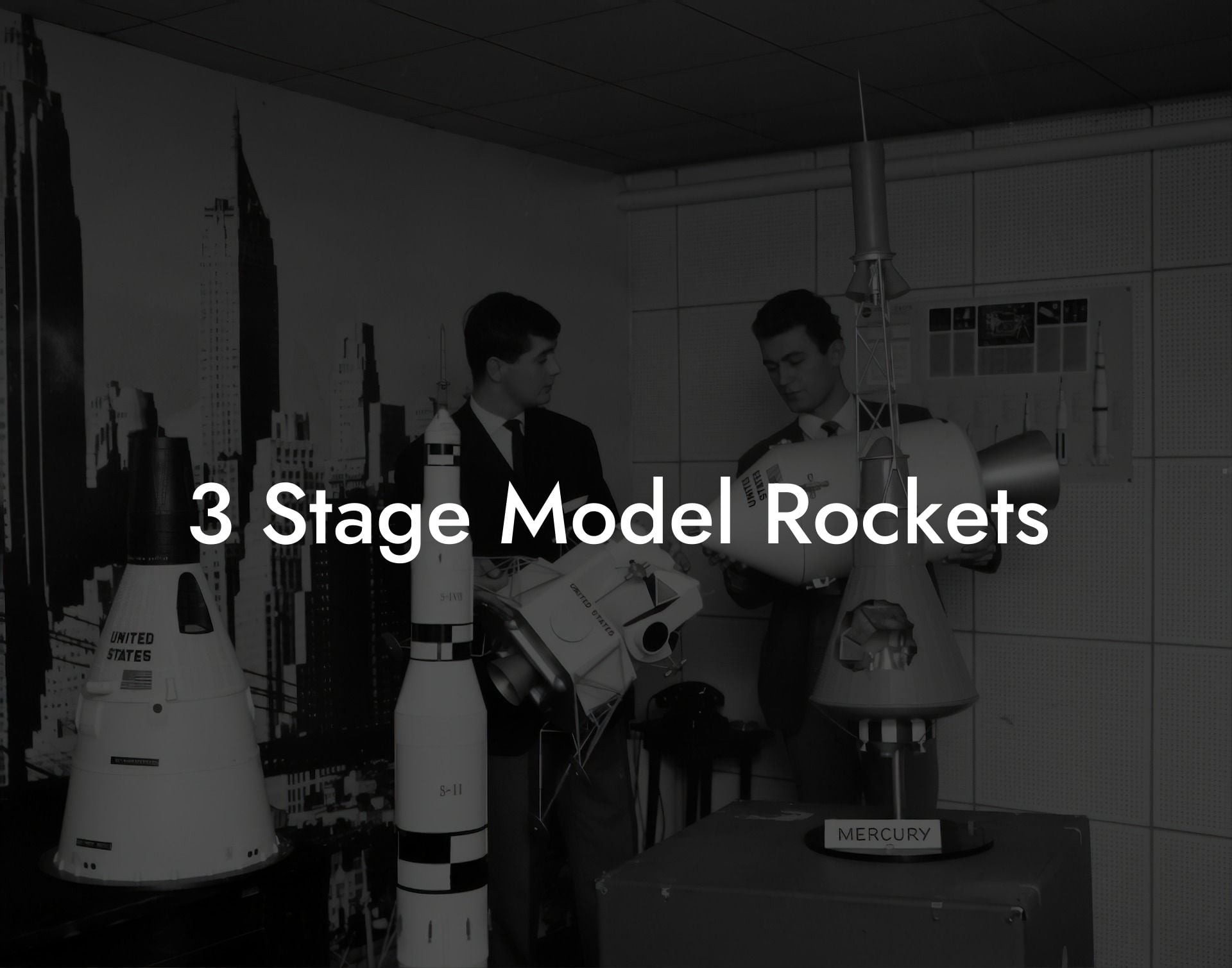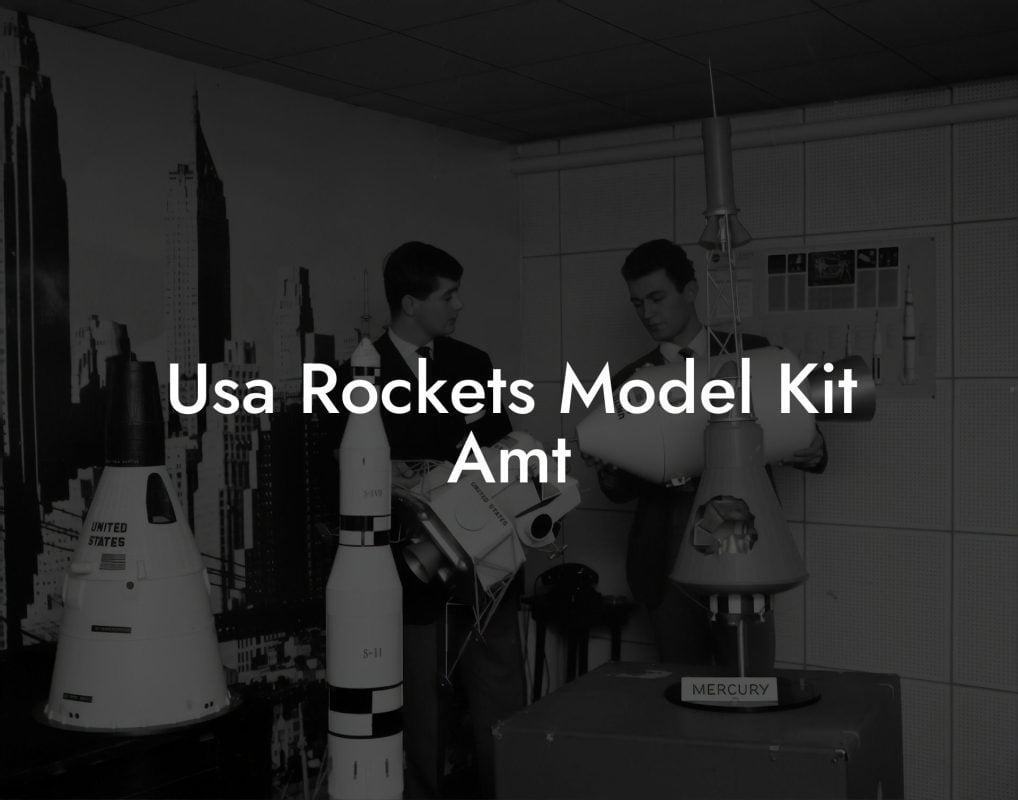Imagine soaring to new heights with the thrill of model rocketry. Welcome to the world of 3 stage model rockets, where precision engineering meets limitless creativity. Whether you're a seasoned enthusiast or just starting out, this comprehensive guide will propel you into the exciting realm of multi-stage model rockets, covering everything from design principles to launch techniques.
Quick Links to Useful Sections
- What Are 3 Stage Model Rockets?
- Design Principles and Components
- Building and Launching Your 3 Stage Model Rocket
- Step 1: Design and Planning
- Step 2: Material Selection and Fabrication
- Step 3: Assembly and Integration
- Step 4: Launch and Recovery
- Tips and Tricks for 3 Stage Model Rocket Success
- Resources and community Support: Your Next Steps
- Frequently Asked Questions: 3 Stage Model Rockets
What Are 3 Stage Model Rockets?
In a 3 stage model rocket, three separate sections, or stages, are stacked on top of each other, each containing its own rocket motor. As the rocket gains altitude, the stages are jettisoned in sequence, allowing the subsequent stage to ignite and continue propelling the rocket upward. This design enables 3 stage model rockets to reach incredible heights, often exceeding 1,000 feet.
The advantages of 3 stage model rockets are numerous. They offer greater flexibility in design, allowing for more efficient use of rocket motors and a wider range of payload capacities. Additionally, the staged design enables a more stable and controlled ascent, reducing the risk of instability and improving overall performance.
Design Principles and Components
A successful 3 stage model rocket design requires careful consideration of several key components:
- Rocket Motors: The heart of any model rocket, rocket motors come in a variety of sizes and types, each with its own thrust characteristics and burn times.
- Staging Mechanisms: The system that connects and separates the stages, staging mechanisms must be reliable and precise to ensure a smooth transition between stages.
- Aerodynamics: The shape and profile of the rocket influence its stability and drag characteristics, affecting its overall performance.
- Recovery Systems: Parachutes or other recovery devices are used to return the rocket to Earth safely, protecting both the rocket and bystanders.
By carefully balancing these components, model rocket enthusiasts can create 3 stage rockets that are both aesthetically pleasing and high-performing.
Looking For The Best Model Rocket Kits? You'll Love These:
Building and Launching Your 3 Stage Model Rocket
Constructing a 3 stage model rocket requires patience, skill, and attention to detail. Here are some tips to get you started:
Step 1: Design and Planning
Determine your rocket's mission objectives, including the desired altitude and payload capacity. Choose a suitable rocket motor and design your staging mechanism accordingly.
Step 2: Material Selection and Fabrication
Select lightweight, durable materials for your rocket's structure and components. Fabricate the individual stages, taking care to ensure precise alignment and secure connections.
Step 3: Assembly and Integration
Assemble the individual stages, carefully integrating the rocket motors, staging mechanisms, and recovery systems. Perform thorough safety checks to ensure a successful launch.
Step 4: Launch and Recovery
Conduct a series of pre-launch checks, then launch your rocket into the sky. Track its ascent and recovery, analyzing the data to refine your design for future flights.
Tips and Tricks for 3 Stage Model Rocket Success
To maximize your chances of success, keep the following tips in mind:
- Choose the right rocket motor: Select a motor that matches your rocket's design and mission objectives.
- Optimize your staging mechanism: Ensure a smooth transition between stages by fine-tuning your staging mechanism.
- Pay attention to aerodynamics: A well-designed rocket shape can significantly improve performance and stability.
- Test and iterate: Refine your design through iterative testing and analysis, making adjustments as needed.
By following these guidelines and staying committed to your project, you'll be well on your way to creating a high-performing 3 stage model rocket.
Resources and community Support: Your Next Steps
Join the thriving community of model rocket enthusiasts to access valuable resources, expert advice, and inspiration:
- Online Forums: Participate in online forums and discussion groups to connect with fellow enthusiasts and learn from their experiences.
- Local Clubs and Meetups: Find local model rocket clubs and meetups to network with like-minded individuals and gain hands-on experience.
- Tutorials and Guides: Utilize online tutorials and guides to refine your skills and stay up-to-date with the latest techniques and technologies.
Remember, the world of 3 stage model rockets is constantly evolving. Stay curious, stay creative, and keep reaching for the sky!
Frequently Asked Questions: 3 Stage Model Rockets
Here are some frequently asked questions about 3 stage model rockets:
1. What is the main advantage of a 3 stage model rocket?
The main advantage is the ability to reach higher altitudes while maintaining a stable and controlled ascent.
2. How do I choose the right rocket motor for my 3 stage model rocket?
Select a motor that matches your rocket's design and mission objectives, considering factors like thrust, burn time, and payload capacity.
3. What is the most critical component of a 3 stage model rocket?
The staging mechanism is crucial, as it ensures a smooth transition between stages and affects the overall performance of the rocket.
4. How do I ensure a safe and successful launch?
Conduct thorough safety checks, follow established launch protocols, and always launch in a safe, open area with minimal wind and obstacles.
5. What is the best way to learn more about 3 stage model rockets?
Join online forums, attend local model rocket clubs and meetups, and participate in tutorials and workshops to stay up-to-date with the latest techniques and technologies.
Looking For The Best Model Rocket Kits? You'll Love These:
Useful Interruption: Dive deeper into the world of Model Rockets with our most popular sections. If there is anything you think is missing or anything you would love for us to write about, just give us a shout.
- Getting Started & Basics With Model Rockets
- Model Rocket Design, Build & Customization
- Model Rocket Propulsion & Engine Technology
- Model Rocket Launch Techniques & Recovery
- Model Rocket Advanced Rocketry & Innovations
- Model Rocket DIY and Customization
- Model Rocket Equipment Reviews & Digital Tools
- Community, Competitions & Education
- Model Rocket Troubleshooting & FAQs
- Model Rocket Bonus/Seasonal & Niche Topics
A group of model rocket enthusiasts gathered at a field for their weekly launch event. Among them was Dave, a seasoned builder known for pushing the limits of hobby rocketry. This time, he had outdone himself.
“Ladies and gentlemen,” Dave announced, dramatically pulling a cloth off his latest creation, “I present to you: The Kraken!”
The crowd gasped. This wasn’t just a model rocket, it was a monster. The thing stood 8 feet tall, had six clustered engines, and was covered in enough duct tape to qualify as a classified aerospace project.
“Dave,” muttered Steve, the cautious safety officer, “Have you, uh… done the math on this?”
“Math?” Dave scoffed. “I built it in my garage at 3 a.m. with parts from eBay. This is an art piece, Steve.”
The countdown began.
5…
4…
3…
2…
1…
The engines ignited with a BOOM, and The Kraken shot up… kind of. It immediately did a violent barrel roll, narrowly missing the spectators before skyrocketing at an angle that could only be described as “legally questionable.”
The crowd collectively ducked as The Kraken flew straight over the adjacent cornfield, where Old Man Jenkins, the grumpiest farmer in town, was minding his business.
KABOOM!
The rocket disappeared behind the barn. A moment later, a flaming piece of Estes igniter wire landed at Steve’s feet. The silence was deafening.
And then, an unmistakable sound echoed across the field.
Jenkins’ shotgun being cocked.
“DAVE!!!” Steve shouted. “RUN.”
And that was the day Dave invented the first-ever biologically powered rocket booster: pure adrenaline.
To this day, nobody knows where The Kraken landed, but legend has it, it still haunts the skies, terrifying unsuspecting drones and low-flying birds.















